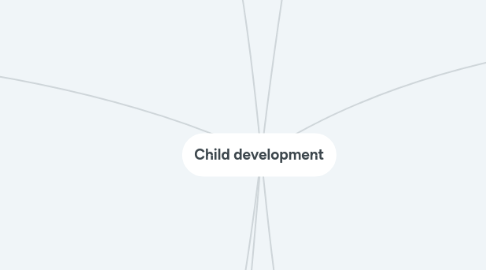
1. Dental
1.1. loss of baby teeth
1.2. Girls loss baby teeth earlier than boys
1.3. Jaw an chin start to widen for adult teeth
1.4. Self image can be impacted
1.5. 33% of teeth in children do not meet
1.6. 14% of children have biting/chewing issues
1.7. Services
1.7.1. School dental
1.7.2. Government funding
2. Health
2.1. Weight
2.1.1. Overweight or obese
2.1.1.1. BMI
2.1.1.2. Over weight at the 85th percentile
2.1.1.3. Obese at the 95th percentile
2.1.1.4. Reasons for excessive weight
2.1.2. Lack of weight
2.1.2.1. Metabolism
2.1.2.2. Family preparation of food
2.1.2.3. Working hours of family
2.1.2.4. Withholding food for family (restriction of food)
2.1.2.5. Malnourished (poor brain function)
2.1.3. Factors of excessive weight or reduced weight
2.1.3.1. Lack of activity
2.1.3.2. refined foods
2.1.3.3. Less play space
2.1.3.4. Family structure
2.1.3.5. Portion of meals
2.1.3.6. Availability of food
2.1.3.7. Cultural
2.1.3.8. Habits
2.1.3.9. Family tend to obese
2.1.3.10. Health implications
2.1.3.10.1. Blood pressure
2.1.3.10.2. Cholesterol
2.1.3.10.3. Breathing
2.1.3.10.4. Diabetes
2.1.3.10.5. sleep
2.1.3.10.6. Digestive
2.1.3.10.7. Social impacts
2.1.3.10.8. Emotional
2.1.3.10.9. Stereotyping
2.1.3.10.10. Academics
2.1.3.11. Adulthood
2.1.3.11.1. Lack of employment or promotion
2.1.3.11.2. Reduction of life chances
2.1.3.11.3. Mistreatment
2.1.4. What interventions can be done
2.1.4.1. Working with family
2.1.4.2. Programs with diet and physical activity
2.1.4.3. School roles
2.1.4.3.1. Canteen
2.1.4.3.2. Playgrounds
2.1.4.3.3. Team activity
2.1.4.3.4. Cooking in school
2.1.4.4. Veggie gardens
2.1.4.5. Cooking
2.2. Low SES
2.2.1. Intake of food
2.2.2. Intake of food that is refined
2.2.3. Production of cortisol can impact hunger
2.2.4. Lack of knowledge
2.2.5. Reacts negatively to stress
3. Whole life Approach
3.1. Food
3.1.1. Making healthy choices
3.1.2. Availability of healthy foods
3.1.3. Cooking preparations
3.2. Physical activity
3.2.1. Outside
3.2.2. Challenging Activities
3.2.3. Fun and exciting activities
3.3. Respect
3.4. Awareness
4. Food intake
4.1. Complex carbs
4.2. Fruit an veg
4.3. Dairy an animal products
4.4. Fats, oils and sugars
5. Definition of middle childhood
5.1. 5-11 years
5.2. In western countries it is during school years
5.3. Factors that can impact a child's development
5.3.1. Gender
5.3.2. lifestyle
5.3.3. Culture
5.3.4. Socioeconomic
5.3.5. Nation or location
5.3.6. Weather
5.3.7. Mental disabilities or physical disabilities
6. Growth
6.1. Body Growth
6.1.1. Growth is slower than 0 to 4 years
6.1.2. Growth differences in gender
6.1.2.1. Girls hold more body mass
6.1.2.2. Boys hold more muscle mass
6.2. Skeletal Growth
6.2.1. Bones will widen an lengthen
6.2.2. Have more flexibility due to ligaments not firmly attached
6.2.3. Children may experience "growing pains"
6.3. Brian Growth
6.3.1. Children have a 10% brain mass increase
6.3.2. Brain structure growth
6.3.3. White Matter
6.3.3.1. Consciousness
6.3.3.2. Impulse control
6.3.3.3. Integration of information
6.3.3.4. strategic thinking
6.3.3.5. spatial Awareness
6.3.3.6. Efficient Communication
6.3.4. Grey Matter
6.3.4.1. Synaptic pruning
6.3.4.2. Memory
6.3.5. Androgen Hormone
6.3.5.1. produced in middle school
6.3.5.2. Boys produce more
6.3.5.3. Higher physical activity
7. Development impacts
7.1. Vision and hearing
7.1.1. Myopia
7.1.1.1. Impacts reading
7.1.1.2. Impacts Writing
7.1.1.3. More seen is high SES
7.1.1.4. Reduction from playing outdoors
7.1.2. Otitis Media
7.1.2.1. Repeated Middle ear infection
7.1.2.2. Loss of Hearing
7.1.2.3. Poor Hearing
7.2. Treatment
7.2.1. Medications
7.2.2. Urine Alarm
7.3. Bed wetting
7.3.1. Maybe due to
7.3.2. Impacts
7.3.2.1. More boys than girls
7.3.2.2. Child social integration
7.4. Illnesses
7.4.1. Start building immunity
7.4.2. Colds and coughs
7.4.3. Mumps/chickenpox/tonsillitis
7.5. Unintentional injuries
7.5.1. Accidental injuries due to risk taking
7.5.2. Accidents occurs in
7.5.2.1. Family home
7.5.2.2. Community
7.5.2.3. School
7.5.3. Prevention
7.5.3.1. Provide safety equipment
7.5.3.2. Supervision
7.5.4. Talk and reflect after accidents
